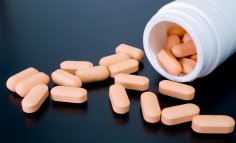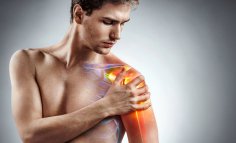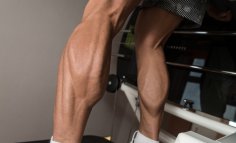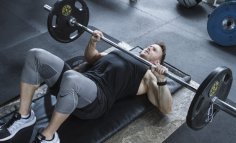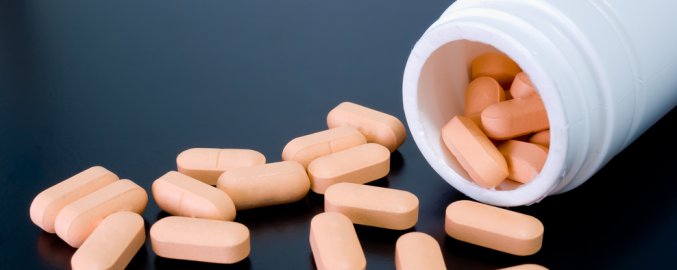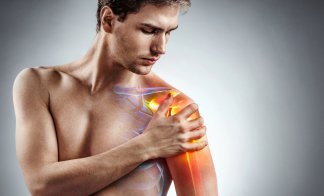Noe definitivt svar er vanskelig å gi, men jeg tror Ossie har oppsummert det viktigste. Jeg sakser fra en artikkel om temaet (første del av artikkelen).
Muscle Hypertrophy
Tetsuro Tamaki
Department of Physiology
Tokai University School of Medicine
Kanagawa, Japan
Skeletal muscle hypertrophy is one of the adaptation mechanisms of the living system to the environment. Muscle hypertrophy is observed in both skeletal muscle and cardiac muscle. However, in this section, special attention is devoted to skeletal muscle hypertrophy. It is generally accepted that mammalian skeletal muscle is enlarged by exercise overloads and is reduced by disuse, as suggested by the famous words of Albert Szent-Gyorgyi "Living systems are worn out by inactivity and developed by use". It is also recognized that the most popular method of inducing muscle hypertrophy and increased muscle strength is high-intensity, short-duration, progressive overload exercise such as weight-lifting. This muscle hypertrophy is called exercise- or work-induced hypertrophy.
Muscle hypertrophy is a volumetrical change in muscle tissues covered by fascia, and may be observed within 2 or 3 months after the onset of training. Structural, neural and enzymatic adaptations of the muscle appear at this time.
The purpose of this section is to understand the physiological mechanisms of muscle hypertrophy including structural, neural and enzymatic adaptations. In addition, various stimulations which result in various forms of muscle hypertrophy are discussed. Skeletal muscle is a tough, plastic and multiple tissue.
What Is The Muscle Hypertrophy ?
Skeletal muscle is composed of muscle fibers, connective tissue surrounding muscle fibers, blood vessels and intra- and extracellular water, and all of these components are covered by fascia. These structure shows in Fig. 1. Therefore, it is considered that increases in mass or volume of skeletal muscle are mainly caused by four factors as follows;
• Transverse enlargement of individual fibers (increases in individual fiber cross-sectional area; muscle fiber hypertrophy).
• Increases in fiber number (formation of new muscle fiber; muscle fiber hyperplasia).
• Increases in connective tissues surrounding muscle fibers.
• Increases in extracellular water
Muscle Fiber Hypertrophy
The muscle fibers are enclosed in a membrane called the sarcolemma, and each muscle fiber contains many myofibrils which are arranged in parallel in the sarcoplasm. Increases in existing individual fiber cross-sectional areas are brought about by increases in these myofibrils within the fibers, which is of course, functionally significant. It enables the muscle to produce additional force because contractile proteins such as myosin and actin also increase and total muscle contraction force becomes higher. For the increase in contractile proteins, protein synthesis is necessary. Protein synthesis and degradation always occur in the living cells, and they are regulated at the same rate to maintain the total protein concentration in the cells. The muscle fiber hypertrophy described above arises from a net increase in the protein synthesis rate(protein synthesis / protein degradation) within the muscle cells, and increased synthesis of RNA (ribonucleic acid) occurs at the same time. There is also an increase in the density or amount of ribosomal RNA polymerase, which lags behind the increase in RNA synthesis. Little is known about the factors which affect the activity of RNA polymerase, but it is known that polyamines have the ability to stimulate RNA synthesis in vitro. In any case, the increase in RNA appears to be an essential aspect of the hypertrophic process.
Muscle Fiber Hyperplasia
It has generally been accepted that the number of muscle fibers does not change once embryonic differentiation of the tissue is complete. The increase in girth of the muscle is therefore the result of existing muscle fiber hypertrophy as mentioned previously. Recently, however, many findings have indicated that muscle enlargement following resistance training may be the result of an increase in both cross-sectional fiber area and an increase in fiber number. The complete details of muscle fiber hyperplasia are dealt with in the essay, "Muscle Hyperplasia".
Increases In Connective Tissue Surrounding Muscle Fibers
Connective tissue surrounding muscle fibers is mainly concerned with preservation of muscle structures and protection of muscle cells(fibers) rather than with the active function of the muscle. Increases in connective tissue are usually observed in regenerating muscles after various muscle injuries induced by crushing, forced stretching, ischemia or anoxia of the muscle and in cases of myopathy such as muscular dystrophy. However, they are also observed in cases of "stretch induced muscle hypertrophy " (described in detail later), after prolonged training mainly using eccentric contraction (forced stretching of near maximally contracted muscle) and the extremely enlarged muscle of elite bodybuilders. Active functional improvement of the muscle can not be expected in such cases. It may be suggested that these muscles are affected by some repetitive damage, and connective tissue increases to protect the muscle cells(fibers).

